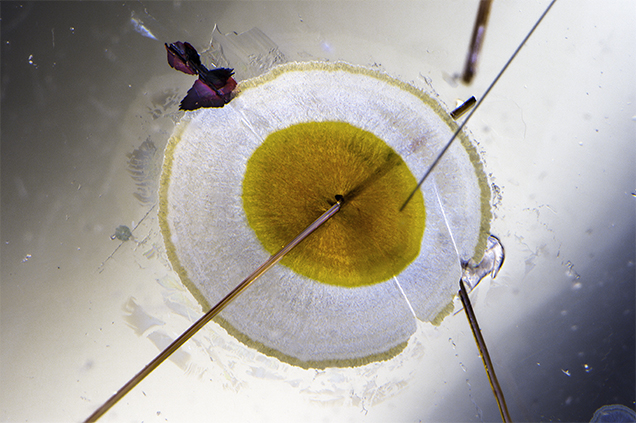The micro-world of gemology is fascinating and often mimics scenery, landscapes, or, in this case, food. Recently the authors examined a natural rock crystal quartz that showed needles piercing a yellow and white circular inclusion (see above). The inclusion mimicked a fried egg and was seen during microscopic examination using fiber-optic lighting. The “egg” was actually an example of epigenetic residue surrounding a rutile needle trapped in a crack within the host crystal. Here the rutile, a mineral composed primarily of titanium dioxide (TiO2), is a syngenetic inclusion, having formed at the same time as the host quartz crystal, and the “egg” formed its circular shape after the rutile and quartz growth stopped. The epigenetic residue in this stone results from secondary fluids that enter surface-reaching fractures (see descriptions and images of inclusions in quartz in E.J. Gübelin and J.I. Koivula, Photoatlas of Inclusions in Gemstones, Vol. 2, 2005, Opinio Publishers, Basel, Switzerland, p. 541). Although quartz is relatively common as a host material, it is often an excellent source for unique mineral inclusions and, with this particular crystal, a fun novelty inclusion. Epigenetic residues in gems and crystals not only provide for interesting inclusion scenes, but they can also help determine growth phases and possible treatments.
Article Credit: GIA

